The cable tricep kickback is an isolation exercise that effectively targets the triceps. In this exercise, you extend your arm backwards against the resistance of a cable machine.
Unlike dumbbell kickbacks, it provides constant tension on the muscle throughout the entire movement.
During it, all three heads of the triceps are engaged, with particular emphasis on the lateral and long heads.
The movement pattern comprises pure elbow extension from about 90 degrees of flexion to full extension (about 180 degrees), with the shoulder joint and upper arm always staying still. This isolated movement pattern is more effective in training the triceps.
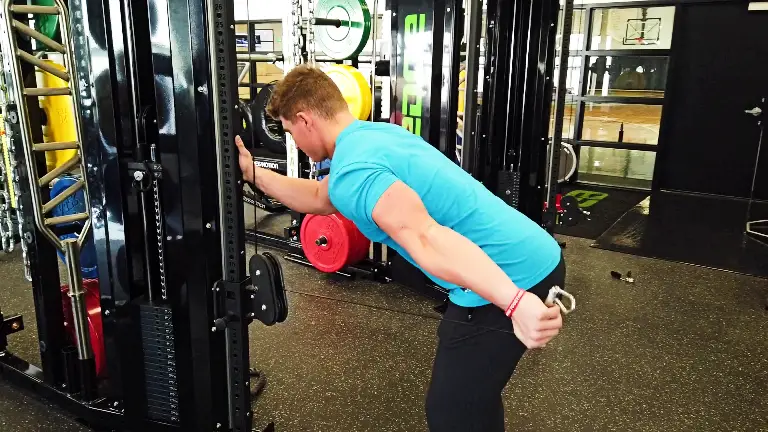
Cable Tricep Kickback Muscles Worked
- Primary Muscle: Triceps Brachii (Long head, lateral head, medial head), especially the long head in overhead variations.
- Secondary Muscles: Anconeus, Deltoids (Anterior head)
- Stabilizer Muscles: Core (Rectus abdominis, obliques), Trapezius & Rhomboids and Forearm muscles
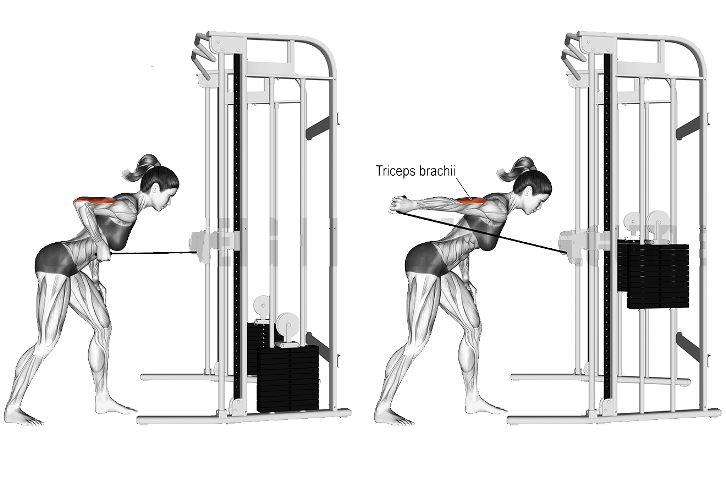
How To Do One Arm Cable Tricep Kickback
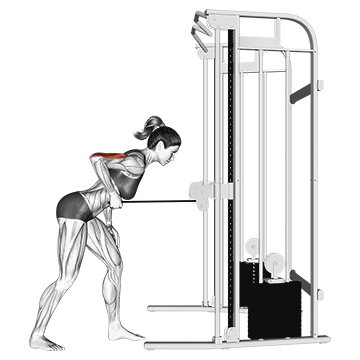
- Set the cable pulley to a little below waist height. Stand facing the cable machine with your feet shoulder-width apart.
- Grab the handle with a neutral grip (palm facing your body). Step or two away from the machine to create initial tension on the cable.
- For stability, begin by adopting a staggered stance—if working the right arm, position the left foot forward and vice versa. This contralateral stance provides optimal balance and prevents unwanted torso rotation during the movement.
- Bend your knees and lean forward at the hips. Keep your back flat.
- Bring your working elbow up so your upper arm (humerus) is parallel to the floor and tucked close to your side. Your elbow should be higher than your back.
- Keep your upper arm parallel to the floor, and extend at the elbow until it’s fully straight.
- Squeeze your triceps at the top of the movement for a brief pause.
- Inhale and slowly return your arm to the starting position in a controlled manner.
- Complete all reps on the right arm and then repeat on the left arm.
Common Mistakes and Tips
- Always warm up and cool down your body for 5 to 10 minutes at the beginning and end of each session.
- The most common mistake I see is people letting their upper arm rise during the extension phase. This shifts activation away from the triceps and onto the posterior deltoid.
- Focus on a smooth, controlled movement rather than lifting a hefty weight.
- Make sure you’re able to maintain a smooth, natural breath throughout your routine.
- Concentrate on squeezing your triceps as you extend your arm.
- Please be cautious if you have any neck, shoulder, or back injuries.
- Keep your body as still as possible; move only your forearms.
- As a general rule, always work your weakest side first. In most cases, this will be the left.
Tricep Kickback Variations
The basic kickback motion is simple and effective, but slight variations in hand position, angle, and resistance can further tone and define the triceps.
This section will explore some of the most effective tricep kickback variations to add to your arm-sculpting workout routines.
1. Two-Arm Cable Triceps Kickback
The two-arm cable triceps kickback is a variation of the triceps kickback exercise that targets both triceps simultaneously.
When you work both triceps simultaneously, you can cut the time you spend on this particular exercise in half compared to doing single-arm kickbacks for the same number of sets. This is great for longer workouts or when time is limited.
For some people, the balanced, symmetrical nature of pulling with both arms can make it easier to maintain a stable torso position (the hip hinge) without the slight rotational forces that can occur in a single-arm version (if not actively bracing). This can allow them to focus more on the tricep contraction in both arms simultaneously.
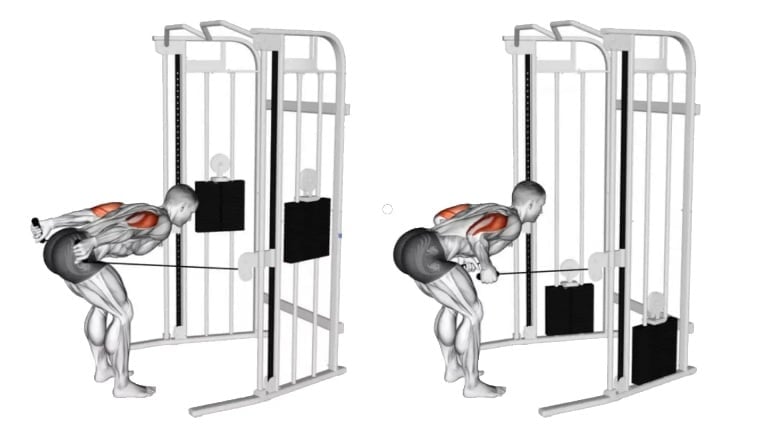
2. Reverse Grip Cable Tricep Kickback
While all tricep heads work during elbow extension, the reverse (supinated) grip can subtly alter the biomechanics at the elbow joint. T
This alteration in hand position is frequently anecdotally reported to establish a slightly more direct line of pull on the medial head of the triceps.
A supinated grip can help some people naturally keep their elbows close to their bodies. This improved elbow stability is crucial for proper kickback form and maximising tricep isolation.
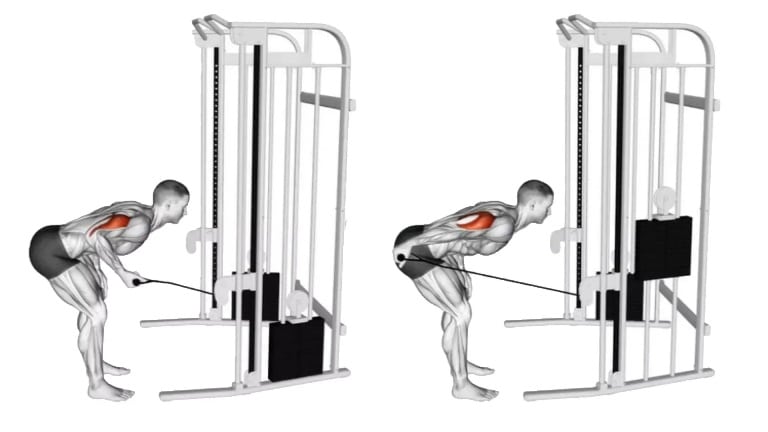
FAQs
Are cable triceps kickbacks effective?
Yes, cable triceps kickbacks can be an effective exercise for targeting and strengthening the triceps muscles, mainly when performed with proper form and technique.
Is cable tricep kickback better than dumbbell kickback?
Both types of exercises have their benefits. However, cable tricep kickbacks may offer some advantages over dumbbell kickbacks, such as adjusting the resistance and maintaining constant tension throughout the movement.
Additionally, cable tricep kickbacks can allow for a greater range of motion. It may be more comfortable for individuals with wrist or elbow pain.

Manish is a NASM-certified fitness and nutrition coach with over 10 years of experience in weight lifting and fat loss fitness coaching. He specializes in gym-based training and has a lot of knowledge about exercise, lifting technique, biomechanics, and more.
Through “Fit Life Regime,” he generously shares the insights he’s gained over a decade in the field. His goal is to equip others with the knowledge to start their own fitness journey.
